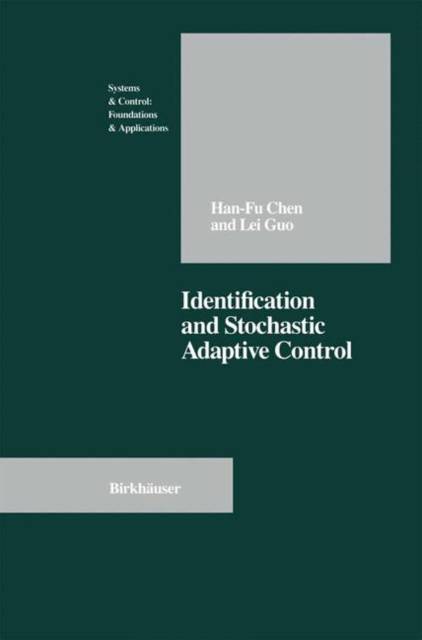
Door een staking bij bpost kan je online bestelling op dit moment iets langer onderweg zijn dan voorzien. Dringend iets nodig? Onze winkels ontvangen jou met open armen!
- Afhalen na 1 uur in een winkel met voorraad
- Gratis thuislevering in België vanaf € 30
- Ruim aanbod met 7 miljoen producten
Door een staking bij bpost kan je online bestelling op dit moment iets langer onderweg zijn dan voorzien. Dringend iets nodig? Onze winkels ontvangen jou met open armen!
- Afhalen na 1 uur in een winkel met voorraad
- Gratis thuislevering in België vanaf € 30
- Ruim aanbod met 7 miljoen producten
Zoeken
€ 167,95
+ 335 punten
Uitvoering
Omschrijving
Identifying the input-output relationship of a system or discovering the evolutionary law of a signal on the basis of observation data, and applying the constructed mathematical model to predicting, controlling or extracting other useful information constitute a problem that has been drawing a lot of attention from engineering and gaining more and more importance in econo- metrics, biology, environmental science and other related areas. Over the last 30-odd years, research on this problem has rapidly developed in various areas under different terms, such as time series analysis, signal processing and system identification. Since the randomness almost always exists in real systems and in observation data, and since the random process is sometimes used to model the uncertainty in systems, it is reasonable to consider the object as a stochastic system. In some applications identification can be carried out off line, but in other cases this is impossible, for example, when the structure or the parameter of the system depends on the sample, or when the system is time-varying. In these cases we have to identify the system on line and to adjust the control in accordance with the model which is supposed to be approaching the true system during the process of identification. This is why there has been an increasing interest in identification and adaptive control for stochastic systems from both theorists and practitioners.
Specificaties
Betrokkenen
- Auteur(s):
- Uitgeverij:
Inhoud
- Aantal bladzijden:
- 435
- Taal:
- Engels
- Reeks:
Eigenschappen
- Productcode (EAN):
- 9780817635978
- Verschijningsdatum:
- 1/11/1991
- Uitvoering:
- Hardcover
- Formaat:
- Genaaid
- Afmetingen:
- 156 mm x 234 mm
- Gewicht:
- 807 g

Alleen bij Standaard Boekhandel
+ 335 punten op je klantenkaart van Standaard Boekhandel
Beoordelingen
We publiceren alleen reviews die voldoen aan de voorwaarden voor reviews. Bekijk onze voorwaarden voor reviews.











